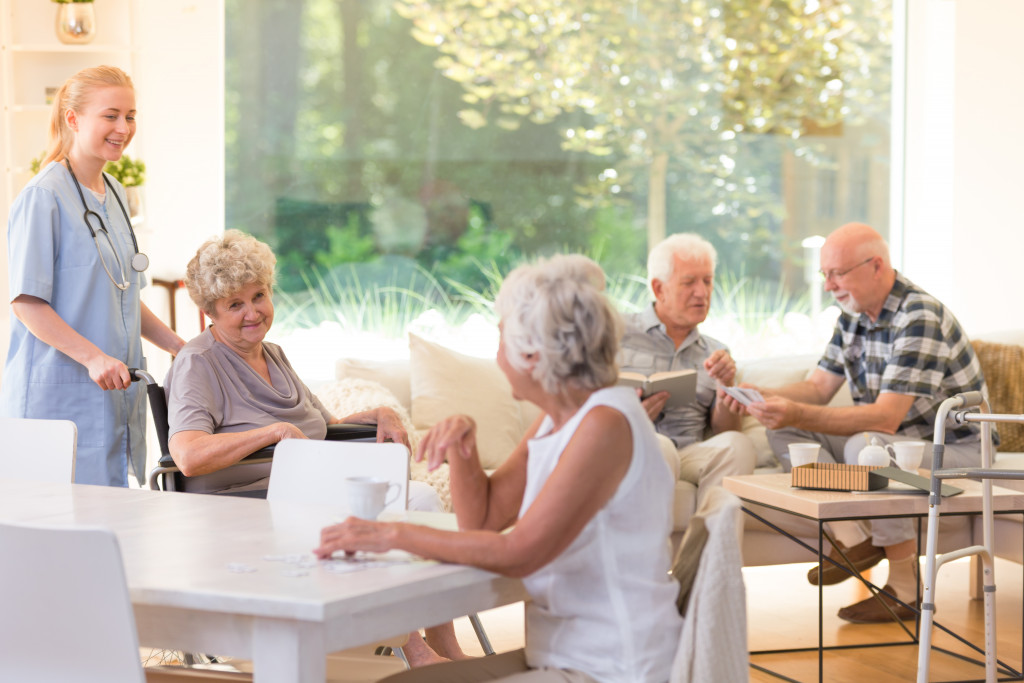• Investment in security cameras, medical alert systems, access controls, and fire suppression is essential for the safety of senior housing facilities.
• Comfortable furniture and equipment such as lift chairs, adjustable beds, wheelchairs, and walkers help seniors maintain mobility.
• Medical assistance must be provided with qualified nurses and caregivers, appropriate medical equipment, and medications from certified pharmacies.
• Providing activities and transportation services will ensure that seniors stay active while allowing them to safely get where they need to go.
For businesses looking to invest in senior housing, a variety of essential investments must be made to ensure the safety and well-being of residents. A study has found that investing in senior housing is an excellent method for diversifying your investment portfolio and creating a reliable passive income. Since it is a relatively niche market, there are some key aspects to consider before investing in senior housing. Here are some of the most important things to know before investing in senior housing.
Safety and Security Systems
The safety and security of residents should always be the top priority when it comes to senior housing facilities. This means businesses must invest in top-of-the-line safety and security systems. Some of the features to look for include the following:
Security Cameras
To monitor possible negligence and criminal behaviors, security cameras are essential in senior housing facilities. Installing high-quality cameras will ensure that the premises are monitored 24/7, and any suspicious activity can be detected quickly. Additionally, you can hook these cameras up to a monitoring system that can alert staff in any emergency.
Medical Alert Systems
Medical alert systems are invaluable in senior housing facilities, allowing staff to respond quickly and efficiently during a medical emergency. These systems should have sensors that monitor vital signs and detect potential issues, alerting the care team.
Access Controls
This means installing locks on all doors and entrances to restrict access to only those with the proper authorization. Additionally, businesses should consider incorporating biometric access controls that only allow authorized personnel access.
Fire Suppression Systems
Fire suppression systems should include fire alarms, sprinklers, and smoke detectors that can detect potential fires quickly and alert staff and residents. Ensure that emergency exits are clearly marked, and that staff is adequately trained in emergency procedures in the event of a fire.

Furniture and Equipment
Seniors need comfort and convenience while living in senior housing facilities. Investing in high-quality furniture and equipment can help make their stay even more comfortable. Some of the items to consider investing in include the following:
Lift Chairs
These chairs are ideal for seniors struggling to get up and down from traditional chairs. A cushioned lift chair helps seniors get up easily and provides comfort. It is ideal for those suffering from joint and muscle pain or stiffness. Or if a resident is recovering from an injury or surgery, a lift chair can provide the necessary support.
Beds with Adjustable Mattresses
These beds can be adjusted to meet the needs of each resident. For example, adjustable mattresses can help relieve pressure points for seniors with chronic pain or discomfort during sleep. Also, the adjustable setting can help with respiratory issues, such as snoring.
Wheelchairs and Walkers
These are essential pieces of equipment that allow seniors to maintain their mobility. Investing in wheelchairs and walkers helps ensure that residents can still get around easily, even if they have difficulty walking due to age or injury.
Bathroom Safety Equipment
Investing in equipment such as grab bars, safety rails, and non-slip mats can help seniors maintain their balance in the bathroom. These items are essential for providing stability as well as preventing falls that could be potentially life-threatening.
Medical Assistance
Of course, one of your top priorities should be investing in medical assistance for the seniors living in your facility. This means doing the following:
- Investing in qualified nurses and caregivers trained in providing medical assistance to seniors, such as administering medications and wound care.
- Providing appropriate medical equipment such as oxygen tanks, CPAP machines, and medication reminders.
- Ensure staff is adequately trained in emergency procedures during a medical emergency.
- Providing medications from licensed and certified pharmacies.
Activities and Transportation Services
Providing engaging activities will keep seniors mentally and physically active while also allowing them to socialize with fellow residents. According to a study, seniors should not spend more than 6 to 8 hours daily in bed or sitting passively. Thus, providing activities such as board games and outdoor walks can help them remain active.

In addition, having reliable transportation services can help seniors get where they need to go without worrying about how they will get there or whether or not they will arrive safely at their destination. Provide shuttles, ridesharing services, or even staff members to ensure seniors can access reliable transportation.
A business that cares for the elderly is a challenging but rewarding venture. It can be a lucrative opportunity with great returns when done correctly. By following these guidelines and investing in the right areas, you can ensure that your senior housing facility is safe, comfortable, and enjoyable for residents and staff.

